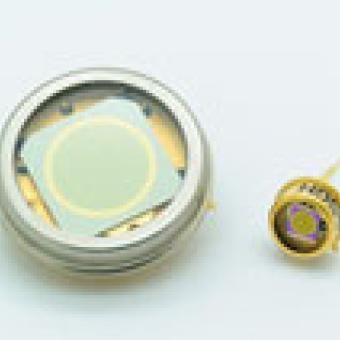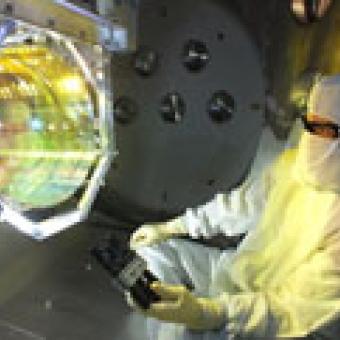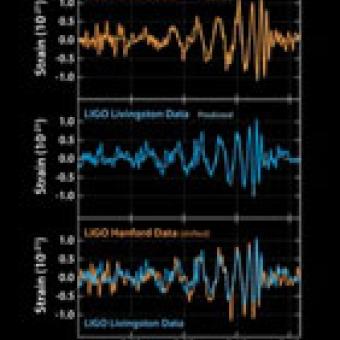Excelitas Sensors and Custom Delivery Contribute to LIGO Scientific Collaboration to Detect Gravitational Waves
Excelitas Technologies® Corp., a global technology leader focused on delivering innovative, customized photonic solutions, announces that its photodiode technology was used in the Laser Interferometer Gravitational-Wave Observatory (LIGO) discovery that recently confirmed yet another prediction of Einstein’s general theory of relativity. Customized for operation within the ultra-low vacuum of the LIGO system, the Excelitas YAG-444AH Silicon PIN Photodiode monitored YAG wavelength laser beam quality. Excelitas’ C30665GH InGaAs PIN Photodiode detected the effect of gravitational waves after they traveled through the interferometers’ 4km-long arms.
“Our advanced technologies enable many ground-breaking discoveries and inventions,” said Eric Desfonds, Excelitas Product Line Manager, Sensors. “This one is huge. The LIGO project’s confirmation of the existence of gravitational waves can be considered one of the biggest scientific discoveries of all time, and the result of the successful design of an impressive large-scale scientific instrument. So we’re especially proud to have contributed to their success.”
For LIGO, Excelitas provided two of its photodiodes that are capable of detecting laser beams at the 1064nm wavelength (also known as the YAG wavelength). In this application they helped measure the change in effective length of the two arms of the interferometer instrument caused by gravitational waves, generated by two black holes colliding in space. Einstein’s theory of relativity predicted such collisions would cause two black holes to form a single, black hole, converting a portion of their combined mass into gravitational waves following the famous E=mc² formula.
Excelitas customized its YAG-444AH Silicon PIN Photodiode to work inside the LIGO interferometer’s extremely sensitive and ultra-low vacuum chamber. To allow them to be used within the chambers, Excelitas modified the silicon photodiode by eliminating a window cap and using only materials that were certified for operation within the interferometer’s exacting environmental requirements. Additionally, Excelitas project team members consulted and assisted closely with LIGO staff to ensure the proper cleaning and handling of these custom parts through installation. This detector helped monitor the quality of laser beams traveling within the vacuum at the two LIGO sites in Hanford, Washington and Livingston, Louisiana.
In addition, LIGO used off-the-shelf Excelitas C30665GH InGaAs PIN Photodiodes to measure the recombined YAG laser beams after they came out of the interferometer’s arms. It measured the optical beam disruption caused by the gravitational waves, and generated the photocurrent which was then converted into the audible “chirp”. The initial finding surpassed all expectations, providing significant and conclusive evidence of the gravitational waves generated by the colliding black holes, only days after the LIGO system’s operational “go live” date.
This discovery was made possible by the enhanced capabilities of Advanced LIGO (aLIGO) and its highly sensitive instruments enabling an even deeper investigation into the mysteries of the universe, leading to the detection of gravitational waves during its first observation run. Excelitas specializes in designing ultra-precise, sensitive components such as the two photodiodes used in this experiment. That expertise, combined with the company’s focus on engaging customers’ challenges, providing responsive technical support and customized solutions, enabled Excelitas to support the LIGO project.
For more information about Excelitas products, visit www.excelitas.com.
About Excelitas Technologies
Excelitas Technologies Corp. is a global technology leader focused on delivering innovative, high-performance, market-driven photonic solutions to meet the lighting, detection and optical technology needs of global customers. From biomedical technology to research laboratory, safety and security, consumer products, semiconductor, energy and environment, industrial, defense and aerospace, Excelitas Technologies is committed to enabling our customers' success in their end-markets. Excelitas Technologies acquired Qioptiq in 2013 and now has approximately 5,500 employees in North America, Europe and Asia, serving customers across the world. Connect with Excelitas on Facebook, LinkedIn and Twitter.
Contacts:
Scott Orr
Dir. of Corporate Marketing, Excelitas Technologies Corp.
[email protected]
781.996.5925
Jeff Lavery or Cheryl Reynhout
on Behalf of Excelitas Technologies Corp.
SVM Public Relations
[email protected]
401.490.9700
Excelitas® is a registered trademark of Excelitas Technologies Corp. All other products and services are either trademarks or registered trademarks of their respective owners.

photodiodes for 1064nm laser beam
Excelitas provided both customized and standard off-the-shelf photodiodes for 1064nm laser beam monitoring within the extremely complex LIGO interferometer systems in Livingston, LA and Hanford, WA.
Click here to download high-resolution image.

YAG-444AH Silicon PIN Photodiode
Excelitas customized the YAG-444AH Silicon PIN Photodiode to allow them to operate within the ultra-low vacuum of the interferometer arms to help monitor beam quality and meet LIGO’s extreme cleanliness levels and stringent contamination control requirements. (Photo courtesy of Caltech/MIT/LIGO Laboratory)
Click here to download high-resolution image.

Plots of Excelitas Photodiode readings
Plots of Excelitas Photodiode readings show the gravitational wave disruption on the beams at both Livingston and Hanford LIGO facilities only thousandths of a second apart, and then superimposed against Einstein’s original predictions (image courtesy of Caltech/MIT/LIGO Laboratory).
Click here to download high-resolution image.